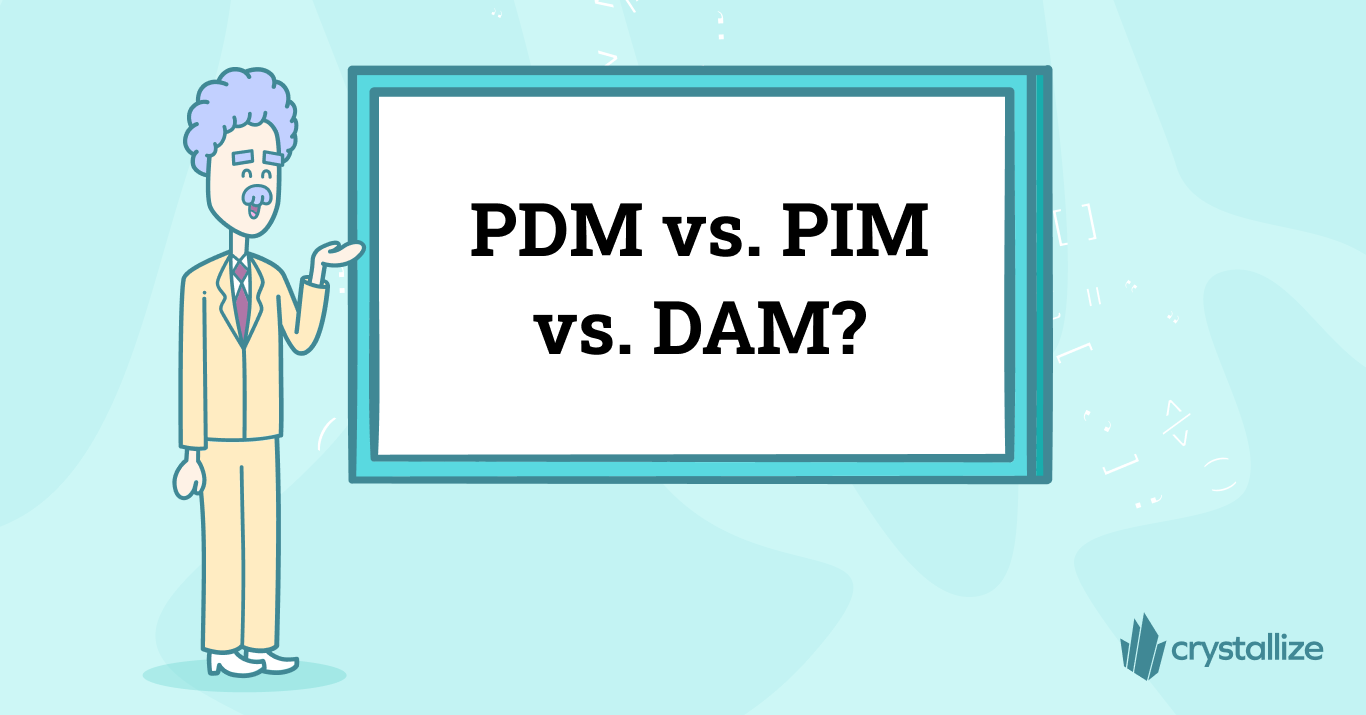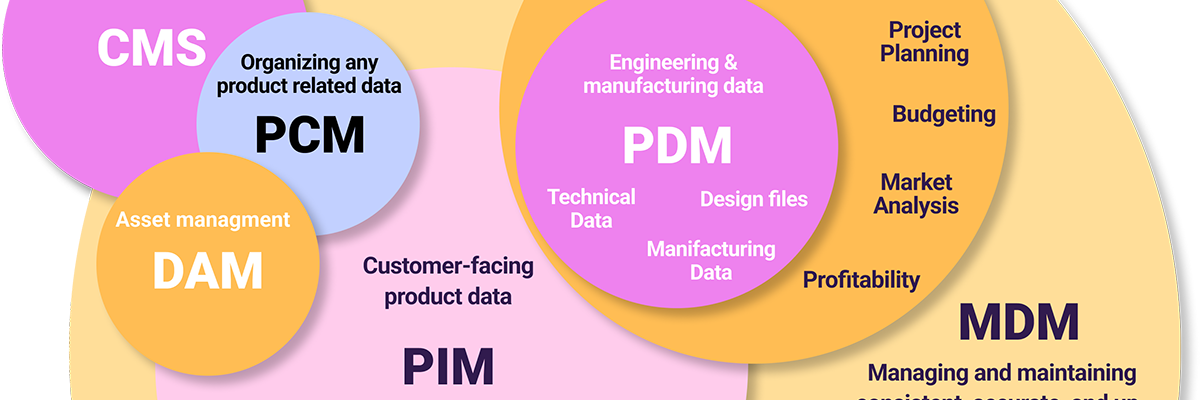PDM vs. PIM vs. DAM: Which One Do You Need?
Businesses and organizations that need to manage and organize massive amounts of product-related data effectively should use PDM.

DAMn (pun intended), so many ways to manage data nowadays… Bet you are wondering which one is right for you and your business. No worries, we’ll help!
Product Data Management (PDM), Product Information Management (PIM), and Digital Asset Management (DAM) are three different systems that help organizations to manage, track, and organize product-related data.
In short, PDM is a system that manages and organizes all available product information. PIM is a tool that centralizes and standardizes product information, such as product descriptions, images, and pricing making it a stepping stone for modern eCommerce businesses. We talked extensively about what is PIM in the linked post.
DAM, or digital asset management, is a system that organizes, stores, and distributes digital assets, such as images, videos, and documents.
A lot of overlapping there, right? Let’s explain these.
What is Product Data Management (PDM)?
A Product Data Management (PDM) system is used to organize and control product-related information like design files, engineering documents, and bills of materials.
It enables collaboration and version control, ensuring that all stakeholders across different teams in a company have access to the latest product information and can work on the same data version.
Benefits of Using PDM System for Your Business
👍 PDM improves collaboration and communication by creating a centralized repository of product-related data that ensures all team members have access to the latest product information and are working on the same data version.
👍 PDM improves data security by providing role-based access control and version control.
👍 PDM helps businesses to streamline their product development processes by providing a single source of truth for product-related data, reducing the need for manual data entry, and reducing the risk of errors.
👍 PDM helps to automate workflows, such as the review and approval process, and provide better traceability of the product development history, thus leading to improvements in product quality, time-to-market, and even a product development cost reduction.
PDM Systems Worth Checking
- SolidWorks PDM: Solidworks PDM is a user-friendly and secure product data management software that enables collaboration and efficient data handling for businesses of all sizes by allowing remote access and easy sharing of product data and removing the need for manual handling and updates, saving engineers time.
- Autodesk Vault: Autodesk Vault is a great product of data management software for businesses of all sizes. It's easy to use with a simple drag-and-drop interface and helps you manage your products by connecting all the different stages of product development.
- Siemens Teamcenter: One of the most robust PDM tools out there, Siemens Teamcenter is a versatile tool with a wide range of features to help businesses efficiently manage their product data -- and especially large products, leading to improved team collaboration, streamlined processes, and increased productivity.
💡Can Crystallize be used as PDM and DAM?
There are reasons why we have very specialized services like PDM. While Crystallize might not be the best fit in all cases, it could be a great fit in many. The core of Crystallize is the flexible product storytelling engine. While we at Crystallize focus mostly on the marketing and sales aspects of your product data, there is literally no limit to the variety of use cases.
When content modeling your product universe in Crystallize, you can extend the model to include the product data required for e.g. data sheets, design documents, or health and safety data. You model your product universe in Crystallize rather than shoehorning your product data into a limited standardized format.
Managing product data in Crystallize especially is a great fit if this is also going to be distributed in external channels. E.g., you want to show the design documents (3d models) in your webshop so the customers can plan using 3d modeling. Or simply to provide health and safety data for compliance reasons as part of the product marketing in your B2C or B2B webshop.
For DAM use cases, Crystallize is an even better fit. You get one single place to manage your images and media. Assets are organized using relations and multi-dimensional topic maps. Images and videos are transcoded and converted to the right sizes and formats for the modern web.
The Difference Between PDM and PIM and DAM
Similar in that they help manage and organize product-related data, PDM, PIM, and DAM serve different purposes.
PDM is focused on product data management, PIM is focused on product information management, and DAM is focused on digital assets management.
PDM and PIM have a similar goal of centralizing and standardizing product-related data, but PDM is focused on engineering and manufacturing data, while PIM is focused on customer-facing data.
On the other hand, DAM is complementary to both PDM and PIM. It allows the management of multimedia and digital assets that are related to the product and can be used by both systems.
📑Managing Product Data and Tools You May Need Infographic.
What is PIM, and how different is it from PDM? Where do DAM and PCM overlap? And do you need ERP for your business use case? We’ve tried to clear up the acronym confusion in eCommerce with the following infographic that provides you with a visual comparison of all relevant terms. Individual posts dig deeper into each term and the concept behind it.
📝READ WHAT IS PIM AND DOWNLOAD INFOGRAPHIC FOR FREE FROM HERE

PDM Use Case
While generally, any company of any size would benefit from using a PDM, we could say that it is best suited for businesses and organizations that need to manage and organize large amounts of product-related data efficiently.
Within a company, engineers would most frequently use it, but operation managers, salespeople, marketers, and any other department involved with the product would greatly benefit from it, too.
As an example, an engineering and manufacturing company that designs and manufactures complex products can benefit from implementing a PDM system to improve collaboration, communication, data security, and version control among team members, which results in better product quality, faster time-to-market, and lower product development costs.
Not sure if you need a PDM or PIM or DAM solution? Don't worry. We got you covered.
Seriously, schedule a personal 1-on-1 Crystallize demo, tailor-made to your use case, to understand the ins and outs of all three approaches. Or, why not SIGN UP for FREE and get an unparalleled level of support from our team to help you get going.

